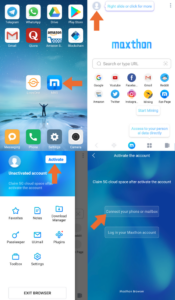Digital banking is constantly changing, reshaping how we handle our financial matters. Each year, new technologies emerge that enhance the banking experience, offering greater convenience, security, and efficiency for account holders. As we approach 2024, it’s crucial to recognise several emerging technologies poised to revolutionise the fintech landscape. Let’s delve into the five key innovations that are set to transform digital banking.

First on the list is Generative AI. The rapid integration of artificial intelligence into everyday life, exemplified by tools like ChatGPT, underscores its permanence and ongoing evolution. Generative AI focuses on natural language processing and content creation within the broader realm of artificial intelligence. Its application in banking holds significant promise, particularly in improving customer service and enriching the overall banking experience.
The power of generative AI lies in its capability to simulate scenarios based on identified patterns. This feature enables financial institutions to gain deeper insights into their customers’ behaviours and preferences, allowing for a more personalised service experience. In various aspects of banking, generative AI can be employed effectively:
1. Risk Assessment and Fraud Detection: By generating data that mimics actual transaction behaviour, AI models assist banks in training their systems to identify irregularities or potentially fraudulent activities with greater accuracy.

2. Customized Financial Services: Leveraging detailed customer data and individual preferences allows AI to design tailored investment portfolios or financial strategies uniquely suited for each user. This personalised approach not only broadens the range of services offered by banks but also fosters stronger connections with account holders through targeted recommendations aligned with their specific needs.
3. Enhanced Customer Service via Chatbots: Generative models contribute to developing sophisticated chatbots that can engage customers more effectively by providing accurate answers and assistance.
As these innovations continue to unfold, they promise a future where digital banking becomes increasingly intuitive and responsive to individual customer needs.
Loan Approvals: Generative AI technology can assess an individual’s creditworthiness by analysing their historical data, empowering financial institutions to make more informed decisions about loan approvals.
Omnichannel Banking: Financial institutions have embraced omnichannel banking as a means to provide a consistent and cohesive experience across various platforms, including physical branches, mobile applications, websites, ATMs, and customer service centres. Although the concept of omnichannel has been in existence for nearly ten years, advancements in technology are finally enabling its realisation. This approach guarantees that accountholders enjoy a seamless experience no matter which platform they choose. For instance, an accountholder may initiate a transaction on their tablet while commuting and later finalise it at a local branch or over the phone with a customer service agent. The capability to begin, pause, and continue interactions across different channels is crucial in today’s digital banking environment and is expected to become even more significant as new technologies emerge.

Moreover, omnichannel banking thrives on the integration and analysis of data, allowing financial institutions to gain deeper insights into their accountholders’ behaviours and preferences. With this valuable information at their disposal, these institutions can tailor offerings, recommendations, and services to meet individual needs better. Importantly, omnichannel banking prioritises the accountholder’s experience at every step of their financial journey. This focus enables financial institutions to anticipate customer needs more effectively while offering greater flexibility during transactions. Building strong connections with accountholders is essential for fostering loyalty and encouraging positive word-of-mouth referrals—ultimately leading to increased business opportunities in the future.
Maxthon
Maxthon has introduced a remarkable array of digital enhancements aimed at transforming your online browsing journey. To begin with, the browser’s performance has been dramatically improved due to an upgraded rendering engine, allowing users to access web pages at astonishing speeds, especially those loaded with multimedia elements. Another standout feature is cloud synchronisation, which effortlessly connects your bookmarks, history, and settings across all devices—be it a desktop computer, tablet, or smartphone—ensuring a smooth and uniform browsing experience.
Additionally, Maxthon includes a robust ad blocker that can be easily turned on. This integrated tool effectively removes intrusive advertisements and accelerates page loading times, leading to a more pleasant browsing atmosphere. One of the most exciting features is the split-screen browsing option that lets users view two web pages side by side—perfect for conducting research or comparing products without the hassle of switching tabs constantly.

Moreover, Maxthon boasts a resource sniffer tool that simplifies finding downloadable media files on any webpage. With this convenient feature, you can effortlessly save videos and music directly from your browser without needing extra software. For those who enjoy customisation, Maxthon offers various themes and layouts that let you personalise your browser environment according to your tastes. Tweaking these settings can significantly improve usability and enhance overall enjoyment.
Privacy-minded users will appreciate Maxthon’s comprehensive privacy protection suite. Tools like incognito mode and anti-tracking technology collaborate to safeguard your online activities from prying eyes. Lastly, Maxthon embraces Progressive Web Apps (PWAs), providing users with even more capabilities to enrich their browsing experience further.
